🎗️Lonny's War Update- October 551, 2023 - April 9, 2025 🎗️
🎗️Day 551 that 59 of our hostages in Hamas captivity
**There is nothing more important than getting them home! NOTHING!**
“I’ve never met them,But I miss them. I’ve never met them,but I think of them every second. I’ve never met them,but they are my family. BRING THEM HOME NOW!!!”
There is no victory until all of the hostages are home!אין נצחון עד שכל החטופים בבית
Red Alerts - Missile, Rocket, Drone (UAV - unmanned aerial vehicles), and Terror Attacks and Death Announcements
*
- Shas chair Deri says Israel willing to pay ‘heavy price’ for hostage deal, but only if Hamas leaders exiled, Gaza demilitarized
In an interview with his ultra-Orthodox party’s HaDerech newspaper, Shas chairman Aryeh Deri says that Israel is ready to agree to a “comprehensive deal” to release all of the hostages, “even if it means paying a heavy price.”
But, he says, this will only happen if Hamas agrees to “the complete demilitarization of the [Gaza] Strip, the expulsion of all Hamas senior officials and commanders…and the establishment of another government that will be agreed upon in advance.”
However, Hamas has rejected such terms, he states.
“It’s been more than a month since we completely stopped aid to Gaza, and we have no intention of renewing it,” he continues, adding that “nothing is entering the Strip.”
Once the public begins to feel the pressure of shortages, “Hamas will be forced to face the painful and frustrated population, which will understand very well who is to blame for its situation,” he says. link Deri is such a political piece of crap hypocrite. He has been saying for a long time that the government must get the hostages home even if a heavy price has to be paid, but has done absolutely nothing to back up those hollow words. Just as Ben Gvir and Smotrich threatened to bring down the government if a deal was made, he could have and should have said that he will bring down the government if a deal isn't made. Why didn't he do that? Because he was protecting his political interests over the interests of the country and the lives of the hostages. Nothing he says can make up for his hypocrisy which literally costs the lives of so many hostages.
- As we approach Passover, the holiday of freedom, the painful irony is that the corrupt and failed government and prime minister don't even talk about the hostages and bringing them to freedom. They can only deal with their internal interests of destroying democracy, firing the Attorney General and Head of the Shin Bet, overthrowing the judicial system, doling out billions to their own interests and preserving their positions in the government. The hell with the hostages and the hell with the well being of the country. Their petty politics reign supreme. So, we are facing another Passover season with hostages rotting in the hell of Hamas captivity while our prime minister holidays in Hungary and so many other ministers fly around the world on our tax money and do nothing that truly matters to the well being of our country.
Gaza and the South
- In Gaza, Zamir tells troops he expects them to defeat Hamas’s Rafah Brigade
Visiting the southern Gaza Strip earlier today, IDF Chief of Staff Lt. Gen. Eyal Zamir tells troops he expects them to defeat Hamas’s Rafah Brigade.
“You returned to fight in the Gaza Strip, in an area where IDF troops are operating for the first time. I expect of you to defeat the Rafah Brigade and lead to victory wherever you are fighting,” Zamir says to troops in the so-called Morag Corridor area.
The IDF in September declared that Hamas’s Rafah Brigade had been defeated, although it had not operated in all areas of the city, including a large area of land between Rafah and Khan Younis, now known as the Morag Corridor.
The military says Zamir held an assessment with the head of the Southern Command, Maj. Gen. Yaniv Asor and commander of the 36th Division, Brig. Gen. Moran Omer, the latter of whom is leading the offensive in the Morag Corridor.
- Abbas tells Hamas to stop giving Israel ‘excuses’ in Gaza
Palestinian Authority President Mahmud Abbas calls on the Hamas terror group to stop giving Israel “excuses” to keep up its devastating offensive in Gaza.
Israel resumed major strikes on the Gaza Strip on March 18, ending a two-month ceasefire with Hamas.
In a statement, the Ramallah-based Palestinian presidency calls on Hamas to “cease making any irresponsible decisions to spare our people the consequences of [the Israeli] aggression.”
The statement pointed to the Israeli hostages still held in Gaza. “Stop giving the occupation any excuses to continue its genocide,” it says.
It called on Hamas, which has ruled Gaza since 2007, to “adhere to the official Palestinian position and the Arab initiatives.”
- Indonesian president says ready to temporarily house ‘wounded, traumatized and orphaned’ Gazans
Indonesia is ready to temporarily shelter Palestinians hit by the war in Gaza, President Prabowo Subianto says, estimating there could be 1,000 in the first wave, as he starts a trip to the Middle East and Turkey.
Prabowo says he has instructed his foreign minister to quickly discuss with the Palestinian side and other parties about how to evacuate impacted Palestinians to Indonesia, a Muslim-majority country.
“We are ready to evacuate the wounded, the traumatized, the orphans,” Prabowo saiys, adding the victims would be in Indonesia temporarily until they have fully recovered from their injuries and the situation in Gaza is safe for their return.
- Military says strike in Gaza’s Shejaiya hit ‘senior Hamas terrorist’
The military tells AFP that a strike on a residential building in Gaza City’s Shejaiya “struck a senior Hamas terrorist who was responsible for planning and executing terrorist attacks” from the area.
It does not give the target’s name, while accusing Hamas of using “human shields.”
Hamas authorities in Gaza say 23 people were killed in the strike, without differentiating between combatants and civilians.
Hamas health authorities say 23 killed in airstrike on residential building in Gaza City
IDF says strikes carried out on 45 targets in Gaza over last day alongside ongoing ground op
- Jets hit Hezbollah weapons depot in Lebanon’s Beqaa Valley
Israeli fighter jets struck a Hezbollah weapons depot in Lebanon’s northeastern Beqaa Valley a short while ago, the military says.
According to the IDF, the site was being used to store weapons used by Hezbollah’s aerial defense unit.
“The presence of the weapons in the area constituted a threat to the State of Israel and a blatant violation of the understandings between Israel and Lebanon,” the military adds.
- Dramatic Statement by Senior Hezbollah Official: Ready to Discuss Disarmament
A senior official in the terrorist organization told Reuters that Hezbollah is willing to engage in talks about disarmament on the condition that Israel withdraws from five outposts in southern Lebanon and stops its attacks. President Joseph Aoun plans to soon begin discussions with the group on the matter. Behind the scenes: American pressure and internal criticism in the country.A senior Hezbollah official said last night (between Tuesday and Wednesday) to Reuters that the organization is ready to discuss disarmament with Lebanese President Joseph Aoun. The unnamed official conditioned the terrorist group's disarmament on a full Israeli withdrawal from the five outposts where the IDF is deployed in southern Lebanon, as well as an end to attacks and assassinations of its members. According to political sources in Lebanon, Aoun plans to start talks with Hezbollah in the near future.The senior official's remarks come amid American pressure to disarm Hezbollah and growing criticism of the group since the war. The Trump administration's envoy, Morgan Ortagus, visited Beirut last weekend and reiterated Washington's demand for Hezbollah and other armed groups in the country to disarm. In an interview with Lebanese channel LBCI, she said: "Hezbollah must disarm; Israel will not tolerate terrorist fire into its territory."
The senior official in the Shiite terrorist organization told Reuters that Hezbollah is willing to discuss its weapons as part of a national defense strategy. However, he emphasized that this depends on the IDF withdrawing from the five outposts in southern Lebanon and halting attacks on its members—"Hezbollah does not rule out discussions on disarmament, but first Israel must stop its aggression toward Lebanon," the official said. So far, no official response has been issued by the organization.Since taking office in January, Lebanese President Joseph Aoun has stated his intention to establish a state monopoly on weapons. According to sources in Lebanon, Aoun believes the issue of Hezbollah's arms should be addressed through dialogue, as an attempt to forcibly disarm the group would lead to conflict.Patriarch Bechara Boutros al-Rai, head of Lebanon's Maronite Church, said last week that the time has come for all weapons to be held by the state—but this must be done gradually and diplomatically to prevent the outbreak of another war. Lebanese Parliament Speaker Nabih Berri, considered a close ally of Hezbollah, is also involved in discussions to bridge gaps.A Lebanese source said that relevant communication channels have begun opening to explore the "transfer of weapons" to state control, after the military and security services expanded their sovereignty in the area.Regional Weakening and Nuclear Negotiations with IranThe dramatic statement by the senior Hezbollah official follows U.S. President Donald Trump's announcement alongside Prime Minister Netanyahu that direct talks are being held with Iran on the nuclear issue. The Shiite terrorist organization lost direct access to Iran after the collapse of the regime of former Syrian President Bashar al-Assad.Last week, Reuters reported that pro-Iranian militias in Iraq are preparing to disarm to avoid confrontation with Trump. Senior Iraqi commanders told Reuters that "the Revolutionary Guards have given their blessing to the move."Tehran's decision to engage in talks with the U.S. on the nuclear issue and the weakening of armed militias in the region appear to have led figures within the terrorist organization to reconsider their military hold on the country. link
- US says it is aware of Palestinian American’s killing by Israeli forces in West Bank
The US State Department says that it was aware of the killing by Israeli forces of a Palestinian American teenager in the West Bank and was seeking more information about the nature of what happened on the ground.
A State Department spokesperson makes the comments to reporters in response to a question on the killing of Omar Mohammad Rabea, 14, and the shooting of two other teenagers.
The IDF says troops opened fire on suspects throwing rocks at motorists on a highway in the area of Turmus Aya, endangering the lives of civilians.
- IDF says it has expanded northern West Bank counter-terrorism op to Nablus area
The IDF says it has expanded its ongoing counter-terrorism operation in the northern West Bank, with troops now operating in the Nablus area.
The military has been carrying out a major offensive in the northern West Bank, dubbed Operation Iron Wall, since January 21, mainly focusing on the Jenin and Tulkarem areas.
Yesterday, officers of the police’s elite Gideonim unit (Unit 33), alongside the IDF and Shin Bet security agency, detained Mohammed al-Bana, a senior member of the former Lion’s Den terror group, the military says.
The IDF says Bana was armed with an assault rifle and a grenade when he was arrested. He was also shot in the leg during the arrest. Bana was involved in numerous shooting and explosive attacks against troops in the West Bank, the military adds.
Troops of the Duvedavan commando unit, meanwhile, detained another wanted Palestinian who the IDF says was involved in shooting attacks on soldiers and was a “prominent weapons dealer” in the West Bank.
Politics and the War and General News
- IDF says it will take strong action against resurgence of reservists refusing to serve
The IDF says it will take strong action against a possible resurgence of reservists refusing to serve amid reports that Air Force commander Tomer Bar had been holding meetings in a bid to foil hundreds from signing a letter that they would do so.
“The IDF maintains a clear and crisp policy regarding non-reporting for reserve service,” a military official says, adding that Bar met with former senior officers planning on signing such a letter refusing to serve and highlighted the security implications of their actions.
The official acknowledges that IDF chief of Staff Eyal Zamir briefly took part in one of the meetings.
A copy of the letter that was not published shows that it called for a deal to be released to free the hostages, even at the expense of ending the war in Gaza.
It said that renewed fighting “was serving personal and not security interests.”
“The renewed fighting does not contribute to any of the declared goals and will lead to the deaths of the hostages, IDF soldiers, innocent civilians and wear down the reservists,” it says.
Israeli Air Force chief Maj. Gen. Tomer Bar met this week with several reservists and veterans, including several former IAF commanders, surrounding their plans to issue a public letter calling to stop serving, according to Hebrew-language media.
The letter was put together by the reservists and veterans over the IDF’s resumption of fighting in Gaza — which they argue is politically motivated — as well as the advancement of the government’s judicial overhaul, the firing of Shin Bet head Ronen Bar, and attempts to remove Attorney General Gali Baharav-Miara, the reports say.
According to the reports, IDF Chief of Staff Lt. Gen. Eyal Zamir attended one of the meetings with Bar.
The letter has not been published, and the IDF has not yet commented. However, Channel 12 reports that hundreds of air force reservists signed the letter and had intended to publish it this morning ahead of a High Court hearing on efforts to fire Bar.
During the government’s original push for the judicial overhaul that was suspended on October 7, 2023, hundreds of reservists — with dozens of pilots among them — refused to serve in protest, saying the moves undermined democracy in Israel and cast shadows over the legitimacy of orders issued to the military.
- No longer shunned, far-right Ben Gvir slated to visit US for official meetings link This convicted criminal racist minister should not be permitted upon US soil. He signifies everything that decent people should be against. He glorifies and encourages Jewish terror against Palestinians. He idolizes murderers, racists and criminals. He is the antithesis of decency and should be shunned by every country of the world including Israel.
- Why Netanyahu’s ‘Qatar is not an enemy’ claim falls short
Opinion: Qatar funds nearly all Sunni terror groups, Muslim Brotherhood and jihadists who carry out atrocities, but with its vast wealth can buy positive coverage and recognition in the West
Anyone with any knowledge of the Middle East was taken aback by Prime Minister Benjamin Netanyahu's assertion that Qatar is a complex country but not an enemy of Israel.Let’s begin with the obvious. Qatar has been funding most Sunni terror groups in the Middle East, including the Muslim Brotherhood and various jihadist factions in recent years. The Gulf nation, which the prime minister claims is not an enemy, funded Hamas’ vast arsenal and its underground tunnel network in Gaza. The viper Qatar nourished in its bosom was out of control during the October 7 massacre, but Doha cannot escape responsibility.Qatar was a full partner in the atrocities of October 7. It has hosted Hamas' political leadership for years and continues to support the group through daily coverage on Al Jazeera.It is a particular skill: Qatar funds terrorism that carries out atrocities and then receives global acclaim. How? Simply by using its vast wealth to enlist politicians and the media.One example came to light in 2013. In December of that year, during the Syrian civil war, the al-Nusra Front—then part of the Syrian al-Qaeda network under the command of current leader Ahmad al-Sharaa—raided the peaceful Christian town of Maaloula, north of Damascus. The jihadists, fully funded by Qatar, declared the residents infidels, burned churches and forced some locals to convert to Islam or be killed.Most of the town’s 3,300 residents fled the rioting Islamists, who went on a killing spree and destroyed statues of Christian saints. A group of Greek Orthodox nuns were among the roughly 50 who remained. The jihadists entered their ancient monastery and abducted 12 of them, taking them to Yabroud, 20 kilometers (12.5 miles) away.As expected, the Qatari-owned Al Jazeera network broadcast the abductors’ messaging, featuring the nuns—then hostages—reciting statements. Al Jazeera reported that the nuns were “guests” being kept under good conditions by their captors. “They were removed from the town for their safety because military forces under President Bashar Assad were endangering their lives in bombing raids.”Qatar soon stepped in officially to mediate the crisis following repeated requests from the Vatican. After funding the terrorists, Doha now appeared as the savior who would secure the nuns' release. This may sound familiar to some. By March, a deal was struck with the Assad regime, and the nuns were freed in exchange for the release of 150 women from Syrian jails. The nuns appeared exhausted; one was unable to walk and was carried by a captor. Al-Nusra forced them to express gratitude for the “hospitality and protection” they received.Much like the IDF lookouts abducted during the Hamas massacre and held in Gaza, who were forced to thank their captors in Arabic upon their release in January.The similarities are no coincidence. Following the shocking abduction of the nuns in Syria, Qatar was praised in Arab media for securing their release and even celebrated by some European outlets. Senior Qatari officials were photographed with members of the clergy, smiling as they accepted gratitude—including from Lebanon’s Maronite Patriarch Bechara Boutros al-Rahi.While media and politicians praised Qatar, a reporter for Saudi Arabia’s Al Arabiya criticized the favorable coverage and the praise heaped on the jihadists' so-called hospitality. But that was only possible through a competing outlet not funded by Qatar.Just how far has Qatar’s influence extended in the Middle East and the West—thanks to its funding—to ensure positive media coverage? Has it reached Israel as well? That may soon be determined in court. link. Dr. Yaron Freidman is a lecturer and Arabic Instructor in the Department of Middle Eastern and Islamic Studies, University of Haifa
- 1,000 troops were in Sderot on Oct. 7, when they were urgently needed elsewhere, probe finds
IDF finds local security team was underequipped, was not trained by military in 2 years before onslaught; many religiously observant locals were unaware of terrorist infiltration
This photo taken from an IDF tank on October 7, 2023, shows the burning Sderot police station after it was attacked by Hamas terrorists (Israel Defense Forces)
On the morning of October 7, 2023, 41 Palestinian terrorists invaded the southern city of Sderot, located less than a mile from the border with the Gaza Strip, amid the Hamas-led onslaught, murdering dozens of civilians and police officers.
Nearly 1,000 Israeli security forces ended up in Sderot, a city of 38,000 residents, on October 7, as terrorists were abducting and massacring hundreds of civilians and numerous smaller communities close to the border, where troops reached hours later. Hundreds of troops remained in the city even after no further terrorists were invading.
On Wednesday, the Israel Defense Forces presented its probe into the attack on Sderot — among its detailed investigations into some 40 battles and massacres that took place during Hamas’s October 7 onslaught, when some 5,600 terrorists stormed across the border, killed some 1,200 people and took 251 hostages to Gaza.
The probe highlighted the bravery of police officers and other troops who fought that day in the southern city, including a cop who killed four terrorists from the roof of Sderot’s police station as the Hamas attackers captured the building.
The investigation concluded that the IDF “failed in its mission to protect” the residents of Sderot, mainly because the military had never prepared for such an event: an Israeli town being attacked by terrorists, as well as a widespread assault on numerous communities and army bases simultaneously by thousands of terrorists.
In all, 53 people were killed in Sderot amid the Hamas onslaught, including 37 civilians, 11 police officers, two firefighters and three IDF soldiers.
An Israeli soldier stands next to a vehicle used by Hamas terrorists in the southern Israeli city of Sderot, October 7, 2023. (Jamal Awad/Flash90)Unlike other towns attacked on October 7, no hostages were taken by the terrorists, as all were either killed or captured.
The circumstances of the death of one civilian in Sderot, Semyon Avdalimov, 66, remain unknown. And two of the three slain soldiers, Staff Sgt. Itamar Bruchim, 20, and Staff Sgt. Adi Baruch, 23, were killed in rocket attacks on Sderot in the days following Hamas’s ground invasion, well after the fighting had ended in the city.
The probe into what happened at Sderot, carried out by Col. Nitai Okashi — the deputy commander of the 36th Division — covered all aspects of the fighting in the city and surrounding area that began on October 7.
Okashi and his team spent hundreds of hours investigating the onslaught and battle at Sderot. The IDF said the investigators made visits to the scene and reviewed every possible source of information, including footage taken by terrorists with body-mounted cameras, surveillance videos, army radio communications, and interviews with survivors and those who fought to defend the city.
The Sderot probe was aimed at drawing specific operational conclusions for the military. It did not examine the wider picture of the military’s perception of Gaza and Hamas in recent years, which was covered in separate, larger investigations into the IDF’s intelligence and defenses.
An Israeli digger removes the rubble from the police station that was overrun by Hamas terrorists on Saturday, in Sderot, Israel, and recaptured on Sunday, October 8, 2023. (AP Photo/Ohad Zwigenberg)The investigation found that Sderot had no formal security perimeter being defended by the IDF, despite being located close to the Gaza border, which enabled the Hamas terrorists to quickly breach the city after taking a nearby highway. The investigation team recommended reorganizing the deployment of the Gaza Division’s Northern Brigade to prevent large-scale, quick and surprise ground invasions from the Strip.
The probe found that because of the wide-scale attack on numerous areas simultaneously, the Gaza Division’s command and control had collapsed, which prevented the troops deployed to the border from understanding what was occurring in Sderot.
The troops deployed to the border came under massive attack during the onslaught, however, they did manage to prevent dozens more terrorists from reaching Sderot in the second and third waves of infiltrators, “preventing a larger disaster in both Sderot and Kibbutz Nir Am,” the investigation team stated.
“But in practice, they did not affect the events within the city, as [the forces from the regional brigade] did not reach the city during the attack,” the probe said.
Israeli soldiers standing near a mural painted at the site of the Old Sderot Police Station that was attacked by Hamas terrorists on October 7, 2023, in the southern city of Sderot, March 11, 2024. (Chaim Goldberg/Flash90)The Hamas terrorists who managed to reach Sderot did so after breaching the Gaza border near the Black Arrow memorial site, which was not known to the troops deployed to the frontier at the time.
The fighting in Sderot was led mostly by police in the first hours, and later, senior IDF officers arrived and established a new chain of command.
Sderot was overflowing with Israeli troops during the October 7 onslaught, while Hamas was massacring civilians in other communities in the southern section of the border, reaching a peak of around 500 soldiers and police for several hours. In all, around 1,000 Israeli forces were in the city on October 7.
This was mainly because many forces were heading to Gaza from the north, and as such, passed through the city and stopped there to fight. Additionally, Hamas terrorists had taken some of the main junctions heading south from Sderot, preventing forces from driving on them.
A car destroyed in the Hamas terror onslaught is seen in Sderot, Israel, on October 7, 2023. (AP Photo/ Ohad Zwigenberg)Sderot also took up a lot of attention because of clips circulating on social media, and broadcast on television, of Hamas terrorists on pickup trucks in the city.
Additionally, the IDF, without a clear picture of what was happening in southern Israel, prioritized sending troops to larger towns and cities, under the assumption that Hamas was focusing its attack on population centers.
Even after Israeli forces had established “operational control” over Sderot at 10:30 a.m., hundreds of troops remained in the city.
Additionally, the investigation found that the IDF provided no warning to the city and police of terrorists breaching the Gaza fence across from Sderot. “If a warning was sent to the city on the infiltration of terrorists already at the start of the events on the border fence, it would have been possible to place police roadblocks on the main junctions at the entrances to the city and foil the enemy’s attack,” the probe stated.
Armed terrorists in Sderot, southern Israel, having infiltrated from Gaza, on the morning of October 7, 2023 (X screenshot; used in accordance with Clause 27a of the Copyright Law)The probe also stated that Sderot’s 22-strong local security team — which is supposed to be armed and trained by the IDF — was underequipped and not prepared for such an event.
In August 2022, the IDF required all Gaza border towns to return their assault rifles to the military following a series of break-ins in which weapons were stolen.
The army conditioned the return of the rifles on all the squad members having an approved method for safely locking them in their homes, or alternatively, an armory in the city. Because that was not in place, the rearming of the team never went ahead.
As a result, squad members were left with just their pistols to engage the heavily armed and overwhelming numbers of terrorists.
Captured weapons from Hamas terrorists lay in the streets of the southern Israeli town of Sderot, October 8, 2023. (Chaim Goldberg/Flash90)The investigation noted in the two years before the onslaught, the local security team did not carry out any training drills with the army; the IDF did not provide the security squad with a “defense dossier,” a type of document detailing scenarios and responses; and amid the attack, bomb shelters in the city which were supposed to open automatically amid rocket fire did not.
Because most residents of Sderot are observant Jews, many were unaware that terrorists had invaded the city. Authorities had sent out a text message after the terrorists invaded the city at 6:58 a.m., but many of those who were keeping the Sabbath did not have their phones with them. This led to many residents walking around the city or praying at synagogues even at 9 a.m., as many terrorists were still in the city.
The IDF Home Front Command had set off sirens warning of rocket fire, but not for a terrorist infiltration. During the entirety of October 7, 45 rockets were fired at Sderot, including 10 within the first 45 minutes.
Since the onslaught, the military has implemented a terrorist infiltration warning system in Gaza border communities.
Israeli rescue teams evacuate a wounded person by helicopter near the southern city of Sderot on October 7, 2023 (Menahem KAHANA / AFP)Of the 41 terrorists who invaded Sderot, 39 were killed by security forces and two were captured alive.
The terrorists included 40 members of Hamas’s elite Nukhba force and one unaffiliated Palestinian man who invaded the city later in the day — the latter of whom was one of those captured by Israeli forces.
Timeline of the attack (Warning: Graphic footage)
There were three major battles during the Hamas attack on Sderot on October 7: At the city’s police station, near a local shopping center, and in one of the neighborhoods.
The police station battle
At 6:58 a.m., a group of 26 Hamas terrorists on two pickup trucks and a stolen Hyundai i10 car drove toward Sderot. The terrorists briefly stopped at a roadside bomb shelter at the entrance to the city, where they murdered Mor Gabay, 30.
The terrorists continued into the city, where at 7 a.m., they shot dead Dolev Swissa, 34, at a traffic circle.
Dolev and his wife, Odaya Swissa, 33, had gotten in their car with their two young daughters and tried to leave the city as the attack began, but were ambushed by the terrorists as they tried to escape.
At 7:03 a.m., the terrorists began to attack Sderot’s police station and opened fire on vehicles approaching the area. The first officer to arrive at the scene was Command Sgt. Maj. Adir Shlomo, 47, head of logistics at the Sderot police station. As he reached the entrance, the terrorists opened fire, killing him.
Meanwhile, an officer at the station, Master Sgt. Eliyahu Michael Harush got a call about terrorists at the nearby Zikim Beach and headed out of the station. Unaware that the terrorists had already reached Sderot, he was killed battling the gunmen who had gathered outside the station.
Amer Odeh Abu Sabila, a Bedouin construction worker, was in Sderot that morning and heard Odaya screaming after Dolev had been killed. He got into the driver’s seat to try and bring Odaya and the two young girls to safety at the Sderot police station, without knowing that it had been taken over by terrorists.
Both Abu Sabila and Odaya were murdered outside the police station at around 7:07 a.m., along with an officer, Command Sgt. Maj. Shmuel Golima, 48, who had also rushed to the scene.
The Swissa’s daughters, Romi, 6, and Lia, 3, were lying on the floor of the car and were unscathed. Harrowing video footage showed the two young girls screaming for help as police officers arrived shortly after, with Romi pleading, “Are you from Israel? Take us!”
Another officer, Command Sgt. Maj. Meir Abergel, 54, the Sderot police station investigation coordinator, arrived at the scene at 7:10 a.m. and was shot dead in his car.
The officers inside the police station headed for the roof of the building, as some of the terrorists began to raid the first floor.
At 7:15 a.m., from the roof of the police station, one of the officers, Supt. Aviad Aaka, opened fire on the terrorists outside, killing four of them. This caused the remaining terrorists outside to rush into the station.
As the remaining terrorists entered the station, they killed Command Sgt. Maj. David Ben Dayan, 58, in the briefing room on the first floor.
They then began to attack the officers who were holed up on the roof of the station and during the exchange of fire, officers First Sgt. Mor Shakuri, 29, and Command Sgt. Maj. Yaron Dayan, 52, were killed.
Blood stains a wall at a police station in the southern city of Sderot after it was damaged during battles to dislodge Hamas terrorists who were stationed inside, on October 8, 2023. (RONALDO SCHEMIDT/ AFP)At 7:20 a.m., a group of police officers led by the commander of the police’s Southern District, Deputy Commissioner Amir Cohen, began to arrive at the scene, although they did not know how many terrorists were inside the station.
At 7:39 a.m., the officers began to organize an attempt to recapture the station and rescue the officers on the roof. At 8:01 a.m. they entered the building before coming under massive fire from the terrorists.
At 8:37 a.m., the officers made another attempt to enter the station but came under fire again.
During these attempts, Command Sgt. Maj. Denis Belenky, 47, Supt. Alexei Shmakalov, 34, and Chief Supt. Martin Kyzmickas, 46, were killed.
At 9 a.m., a group of officers from the police’s elite Yama counter-terrorism unit arrived at the station and launched a new attempt to recapture the building at 9:52 a.m., during which they managed to take over the first floor and recover those wounded.
At 1:30 p.m., the Yamam officers using a crane rescued the officers stranded on the roof of the police station.
Soldiers walk in front of a police station that was damaged during battles to dislodge Hamas terrorists who were stationed inside, in the southern city of Sderot, on October 8, 2023. (JACK GUEZ/AFP)At 2 p.m., the officers made an attempt to capture the roof of the station from the terrorists but were unsuccessful. By then, no more officers were inside the building.
At 4 p.m., police and the IDF began carrying out a tactic known as “pressure cooker,” which involves escalating the volume of fire against a building to flush suspects out. The officers fired LAW missiles at the building at this time.
At 7 p.m., four terrorists attempted to flee the building and were killed by the forces waiting outside. At 10:23 p.m., another five terrorists tried to flee and were also killed.
At 10:37 p.m., an Israeli Air Force drone carried out an airstrike on the building, and an hour later, at 11:37 p.m., a tank from the 401st Armored Brigade fired shells at the building. At 1:50 a.m. on October 8, an IAF helicopter fired at the building, as terrorists were still inside.
During the night, the IDF brought a D9 armored bulldozer in an attempt to destroy the building. At 2 a.m., another terrorist tried to flee and was killed, and at 2:13 a.m., a further four terrorists attempted to run from the station and were all killed.
At 8:46 a.m. on October 8, the final terrorist inside the police station was killed, and at 9:30 a.m. the building was declared cleared of threats.
During the attack on the Sderot police station and the surrounding area, all 26 terrorists were eliminated. Sixteen people were killed, including 10 police officers and six civilians.
The shopping center attack
At 7:01 a.m., a group of nine Hamas terrorists entered Sderot. They drove through the city and murdered Leonid Lozovsky, 51, who was heading out for work.
At around 7:15 a.m., the terrorists reached a public bomb shelter close to the Rami Levy supermarket in the city.
Outside the shelter were 13 elderly people who were on their way to an outing at a Dead Sea resort. The party had set off on a minibus but it had a flat tire and halted at a bus stop.
As the group was waiting, Hamas launched its invasion, which came under cover of a barrage of thousands of rockets fired across Israel. There was a small public bomb shelter at the bus stop but it was fitted with a smart lock which was supposed to automatically open during a rocket attack. However, the system did not work, leaving the retirees stuck outside.
Minutes later, the nine Hamas terrorists riding pickup trucks arrived and shot dead all 13 people in the group. Gruesome images of the elderly Israelis lying dead outside the shelter were some of the first to be shared on social media on the morning of the massacre.
Israeli soldiers walk next to bodies of people murdered by Hamas terrorists lying outside the shelter in the southern Israeli city of Sderot, October 7, 2023. (Photo by Jamal Awad/Flash90)A further four civilians were murdered by the terrorists close to the Rami Levy supermarket.
The terrorists then set out for the Mall 7 shopping center on the edge of the city, while murdering two civilians en route.
At the shopping center, the terrorists at around 7:28 a.m. tried to enter a gas station, where 11 civilians were hiding.
The terrorists then headed back out of the city, reaching the Sderot Junction. A group of Yamam officers had reached the area, and exchanged fire with the terrorists, killing three of them on a pickup truck. One officer, Sgt. Maj. Chen Nahmias, 43, was killed in the incident.
The other five terrorists fled toward Sderot’s train station. At 8:35 a.m., Yamam officers and several other Border Police officers exchanged fire with the terrorists on the Route 34 highway, near the train station.
By 10 a.m., when another group of police officers arrived, all of the remaining terrorists were killed.
In all, 30 people were killed by these nine terrorists, including 27 civilians, two firefighters and one police officer.
The Ahuza neighborhood attack
At 7:30 a.m., a group of five Hamas terrorists invaded Sderot’s northwestern Ahuza neighborhood on foot.
Surveillance camera footage timestamped at 7:34 a.m., showed the terrorists trying to breach into homes. In one of the homes, the terrorists killed civilian Haim Ashraf, 63.
Over the following hour the terrorists walked around the neighborhood, trying to break into homes and kill civilians.
At 8:30 a.m., terrorists tried to breach a synagogue. Outside the synagogue, the terrorists murdered Alon Toledano, 54.
The body of a person killed by Hamas terrorists lies covered inside a bullet-riddled car in the southern city of Sderot on October 7, 2023 (Oren ZIV / AFP)Two soldiers who were at the synagogue fought back, and the terrorists moved on to other homes.
Another man, Meir Malka, 78, was killed by the terrorists at 8:35 a.m.
The terrorists then split up in the neighborhood.
Yamam officers who had been dispatched to the Ahuza neighborhood from the police station at 8:40 killed three of the five terrorists.
At 8:45 a.m., soldiers of the IDF’s LOTAR counterterrorism unit arrived in the neighborhood and exchanged fire with one of the terrorists. The terrorist was killed, as was one of the soldiers, Staff Sgt. Ben Rubinshtain, 20.
The fifth terrorist was captured at 9:15 a.m., after he was found to be hiding in a bush.
At 10 a.m., an unaffiliated Palestinian man who had infiltrated Israel via the Erez Crossing — which had also been attacked by Hamas — reached the Ahuza neighborhood. He broke into a kindergarten and stole a knife before being detained by troops at 10:30 a.m. link
- IDF, Defense Ministry announce plan to commemorate slain civilians who showed ‘extraordinary courage’
The IDF and Defense Ministry announce a new national framework to honor civilians who acted with exceptional bravery or died under unique circumstances during Hamas’s October 7, 2023, attack and the subsequent war.
Under the government decision, civilians who fought in the battles during the Hamas-led onslaught in southern Israel on October 7-8, hostages murdered in captivity after taking courageous action, and individuals who served in the military during the ongoing war and were killed while off duty, will now be eligible for official recognition and commemoration — subject to defined criteria.
The plan includes military representation at civilian funerals, special plaques on graves marked with the state emblem, and formal mention during national memorial ceremonies and on the state website for victims of hostilities.
According to the statement, families may submit applications through the IDF’s “Kesher Ad” casualty support system.
The decision comes amid growing calls to honor civilians who played active roles in the defense effort or were killed in extraordinary circumstances.
An advisory committee was established in April 2024 by then IDF Personnel Directorate head Maj. Gen. Yaniv Asor, at the request of former IDF chief of staff Herzi Halevi and with the approval of then defense minister Yoav Gallant, to evaluate how it would “recognize and honor” hostages and other civilians who participated in the fighting or were in unique situations amid the war.
The committee includes senior figures from the Defense Ministry, casualty departments, and public memorial bodies.
- Houthis report 2 killed in suspected US strikes on Yemen port city of Hodeida
- Poll: 53% of Americans now have unfavorable view of Israel, 32% confident in Netanyahu
- US only told Netanyahu it was talking with Iran after he got to DC; Trump did not promise that deal would meet PM’s demands
A US lawsuit filed on Monday by victims of the October 7 attack claimed that a prominent Palestinian-American businessman, Bashar Masri, aided Hamas through business projects in the Gaza Strip.
The lawsuit argued that Hamas deceived Israel ahead of the invasion by feigning an interest in developing Gaza, and that Masri and his companies were “an integral part of that grand deception.”
“They owned and operated flagship properties in Gaza that they knowingly and deliberately integrated into Hamas’s terrorist infrastructure and that were crucial elements in Hamas’s attack plan on October 7,” the lawsuit said.
The plaintiffs were around 200 American victims of the October 7 attack and their family members, including the families of slain hostages Hersh Goldberg-Polin and Itay Chen, and Yechiel Leiter, Israel’s ambassador to the US, whose son was killed in Gaza in November 2023.
The lawsuit did not say that Masri knew about the October 7 attack, but it did assert that he was aware that Hamas was using his properties for military purposes.
The lawsuit said that Masri held longtime animosity toward Israel, including by helping plan the First Intifada. He sought to remake himself as a businessperson after moving to the US and investing in development projects in Palestinian areas, but continued “conspiring with Hamas” to build infrastructure used in the October 7 attack and provided cover for the terror group’s “true violent aims,” the lawsuit said. Masri used his image to solicit investments from US institutions, the World Bank, the United Nations and the European Union, it alleged.

Jon Polin and Rachel Goldberg-Polin, the parents of Hersh Goldberg-Polin who was murdered by Hamas terrorists in captivity in Gaza, speak during a rally calling for the release of all hostages, at Hostages Square in Tel Aviv, November 23, 2024. (Avshalom Sassoni/Flash90)
Some of Masri’s development projects appeared to be legitimate, but were also used to build and hide Hamas tunnels, store rockets, host Hamas leaders, train Hamas operatives, and produce electricity for Hamas tunnels, the case said.
The lawsuit focused on the Gaza Industrial Estate, a 480,000-square-meter industrial park across the border from Kibbutz Nahal Oz, one of the hardest-hit communities in the October 7 attack. The park was financed by USAID, the UN, the EU, and others. Masri coordinated the park’s development with Hamas, and the terror group built tunnels under the park, used the facility to probe the border fence and siphoned its electricity for tunnels, the lawsuit alleged. A water tower at the park held a Hamas anti-tank weapons installation in view of the border wall.
In May 2022, for example, Masri participated in a signing agreement with the Hamas deputy minister of economy to renovate the industrial park. Masri regularly visited the property after it housed Hamas tunnels and weaponry. Masri’s companies later condemned Israel for striking the properties, despite knowing they were used by Hamas, the lawsuit said.
Masri also oversaw two luxury hotels in Gaza that Hamas, including its late chief Yahya Sinwar, used to host events. The terror group’s tunnels ran underneath, and were connected to, the hotels, the suit said. One of the hotels, the Blue Beach, was allegedly connected by tunnel to a Hamas training facility. The terror group used the hotels as a base of operations and to ambush IDF troops, the lawsuit said.
Damaged plastic pipes are seen piled up outside a factory in the Gaza Industrial Estate after it was hit in Israeli attacks during an 11-day war with Hamas, May 24, 2021. (AP Photo/Khalil Hamra)
Masri’s office denied the allegations in a statement shared with The Times of Israel.
“He was shocked to learn through the media that a baseless complaint was filed today referring to false allegations against him and certain businesses he is associated with. Neither he nor those entities have ever engaged in unlawful activity or provided support for violence and militancy,” the statement said. “He unequivocally opposes violence of any kind. He will seek the dismissal of these false allegations in court.”
Masri is on the dean’s council at Harvard University’s Kennedy School of Government, served on the advisory council for the US Development Finance Corporation from 2020-2023, and has been linked to the Trump administration. He led the development of Rawabi, a planned city in the West Bank and a major project.
The lawsuit seeks damages under the Anti-Terrorism Act and a trial by jury. It was filed in the federal district court of Washington, DC, where Masri has a residence. The law firms Willkie Farr & Gallagher, Osen, Stein Mitchell Beato & Missner, and Motley Rice are representing the plaintiffs.
“Our lawsuit not only seeks a measure of justice for the American victims of the October 7th attacks, but crucially, it strives to expose and hold accountable the various individuals and companies that aided and abetted Hamas’s brutal atrocities on that dark day — chief among them Bashar Masri and, regrettably, extending to international and US taxpayer-funded institutions,” Gary M. Osen, managing partner at Osen LLC, told The Times of Israel in a statement.
Masri was born in 1961 in the West Bank city of Nablus. He supported violence against Israel, and was jailed as a teenager for throwing stones at Israeli troops. He was released, finished high school in Egypt, and then attended college in the US. He returned to the Palestinian territories to participate in the First Intifada, then returned to the US, where he married an American and gained citizenship.
The lawsuit is the latest in a series of cases filed by Jewish advocates across the US, part of an ongoing and evolving legal battle that has gained steam since the October 7 attack. link
Acronyms and Glossary
ICC - International Criminal Court in the Hague
IJC - International Court of Justice in the Hague
MDA - Magen David Adom - Israel Ambulance Corp
PA - Palestinian Authority - President Mahmud Abbas, aka Abu Mazen
PMO- Prime Minister's Office
UAV - Unmanned Aerial vehicle, Drone. Could be used for surveillance and reconnaissance, or be weaponized with missiles or contain explosives for 'suicide' explosion mission
Join my Whatsapp update group https://chat.whatsapp.com/IQ3OtwE6ydxBeBAxWNziB0
Twitter - @LonnyB58 Bluesky - @lonny-b.bsky.social
Twitter - @LonnyB58





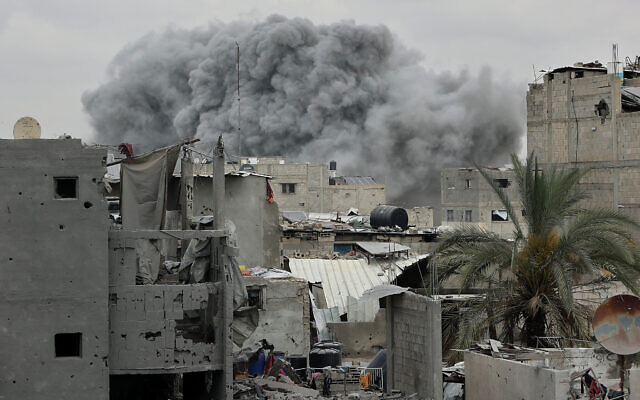

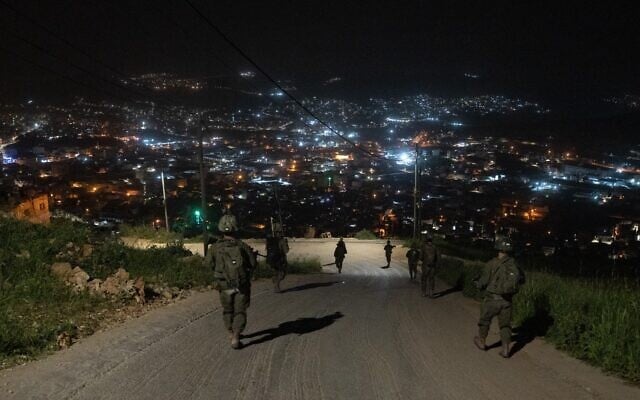
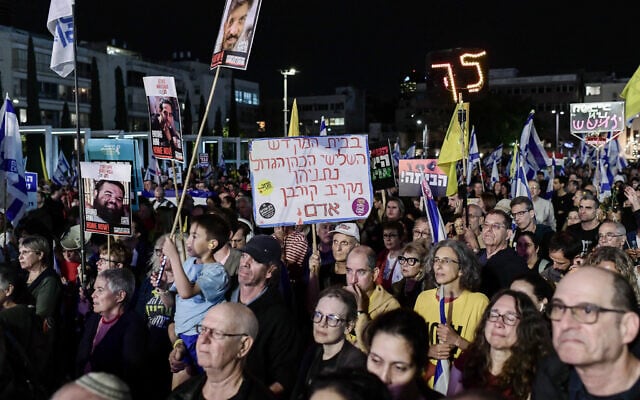

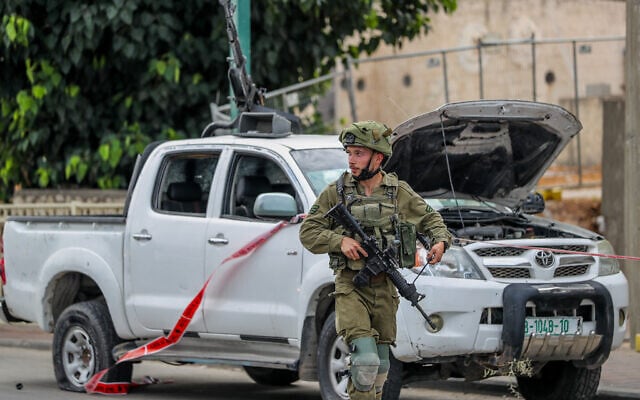


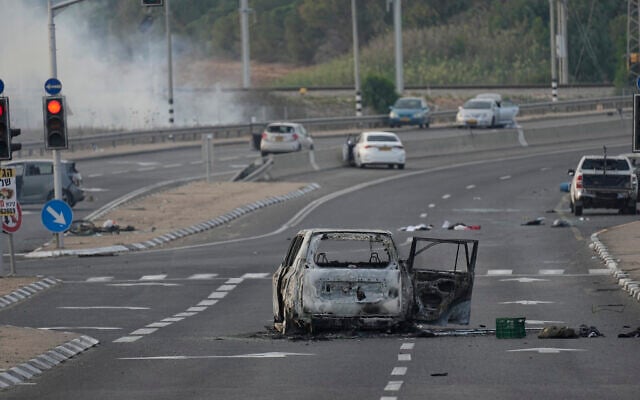
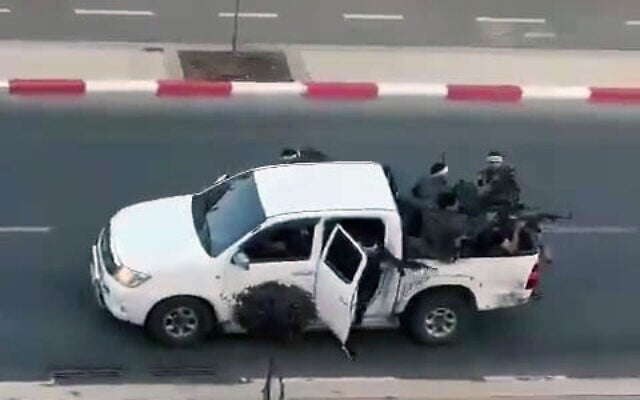
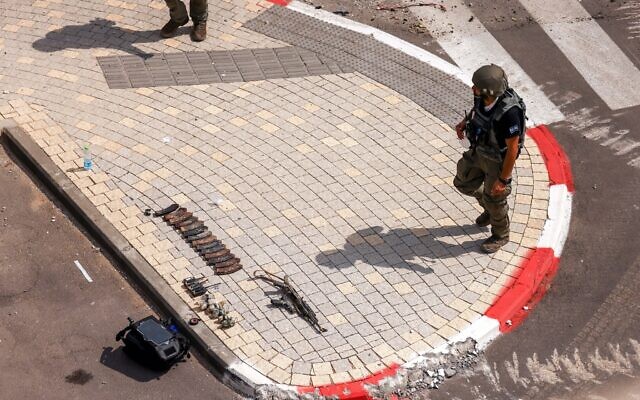

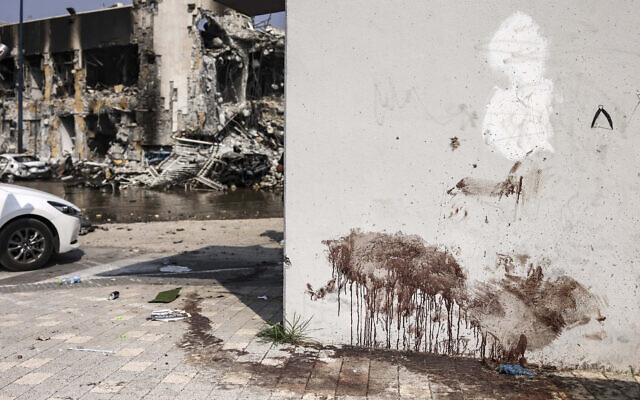

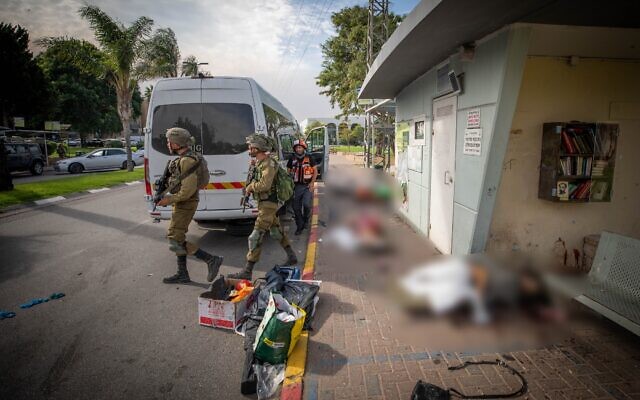
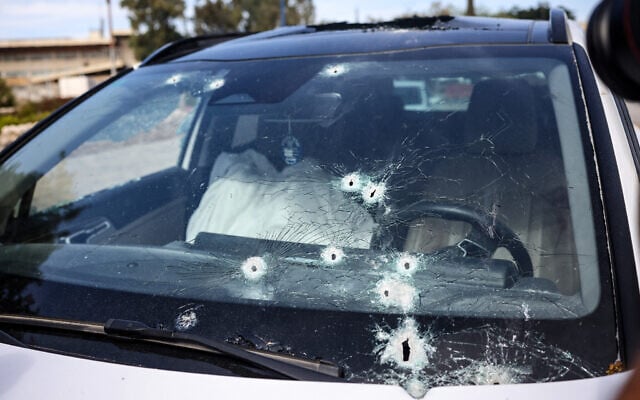


Comments
Post a Comment